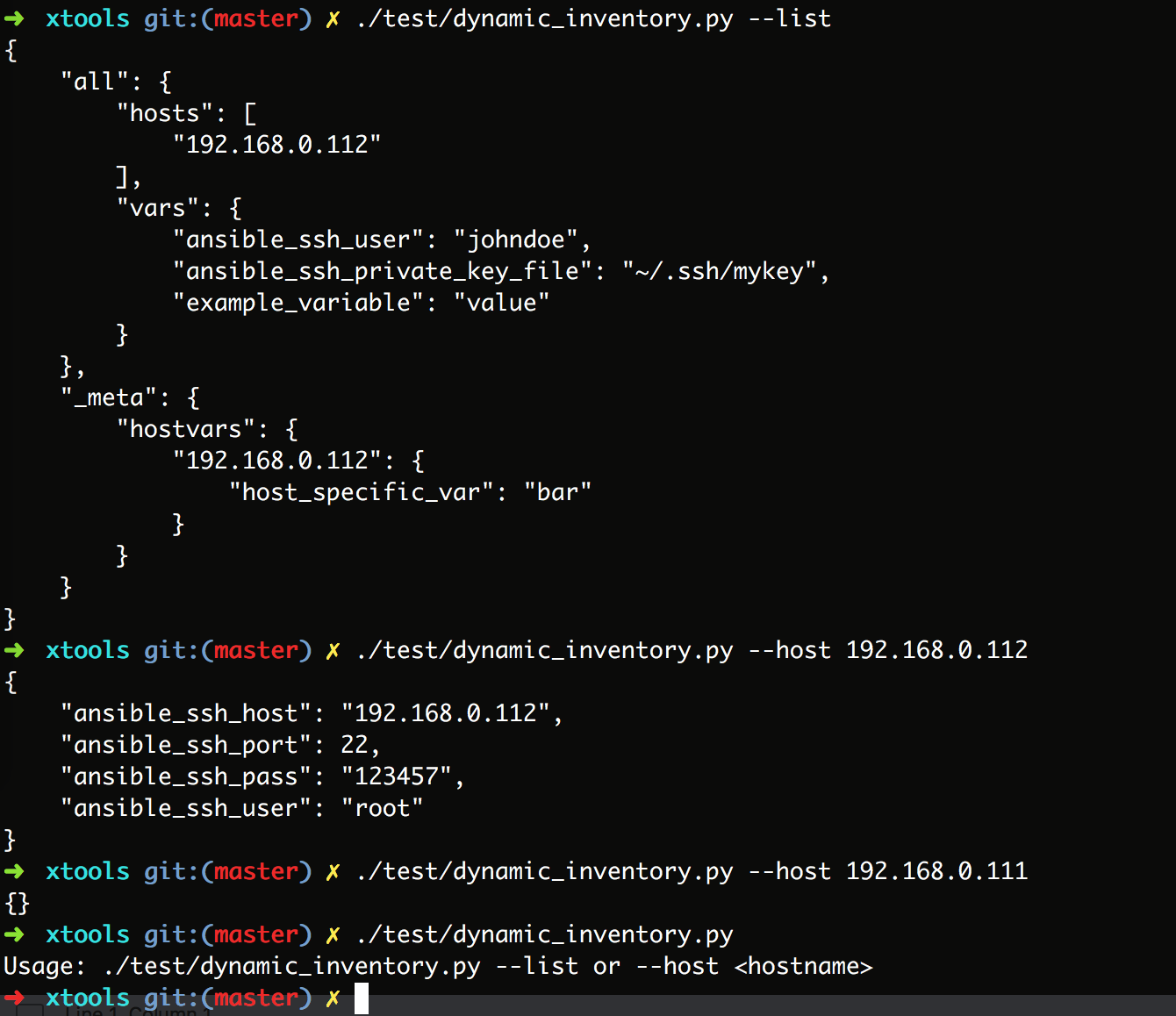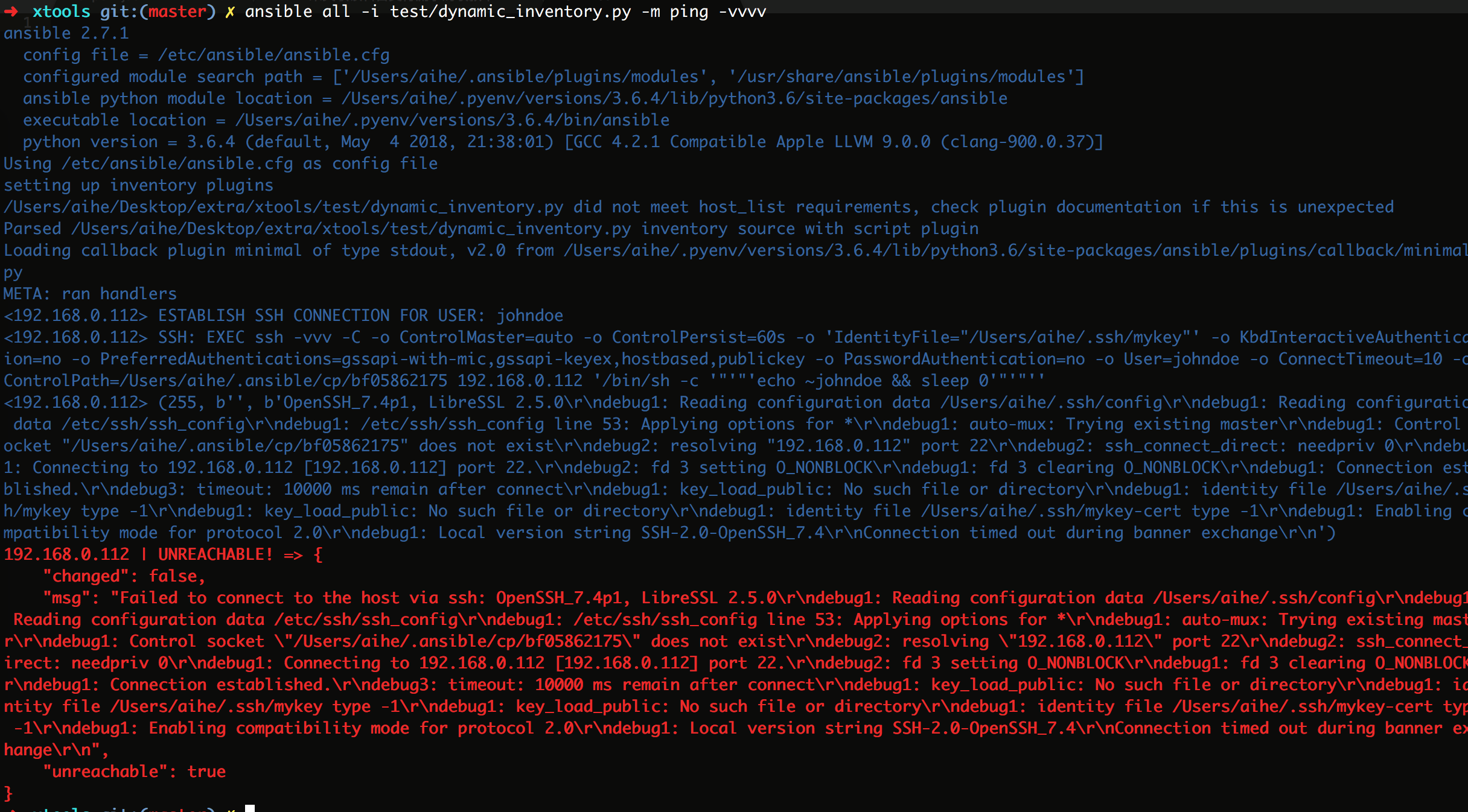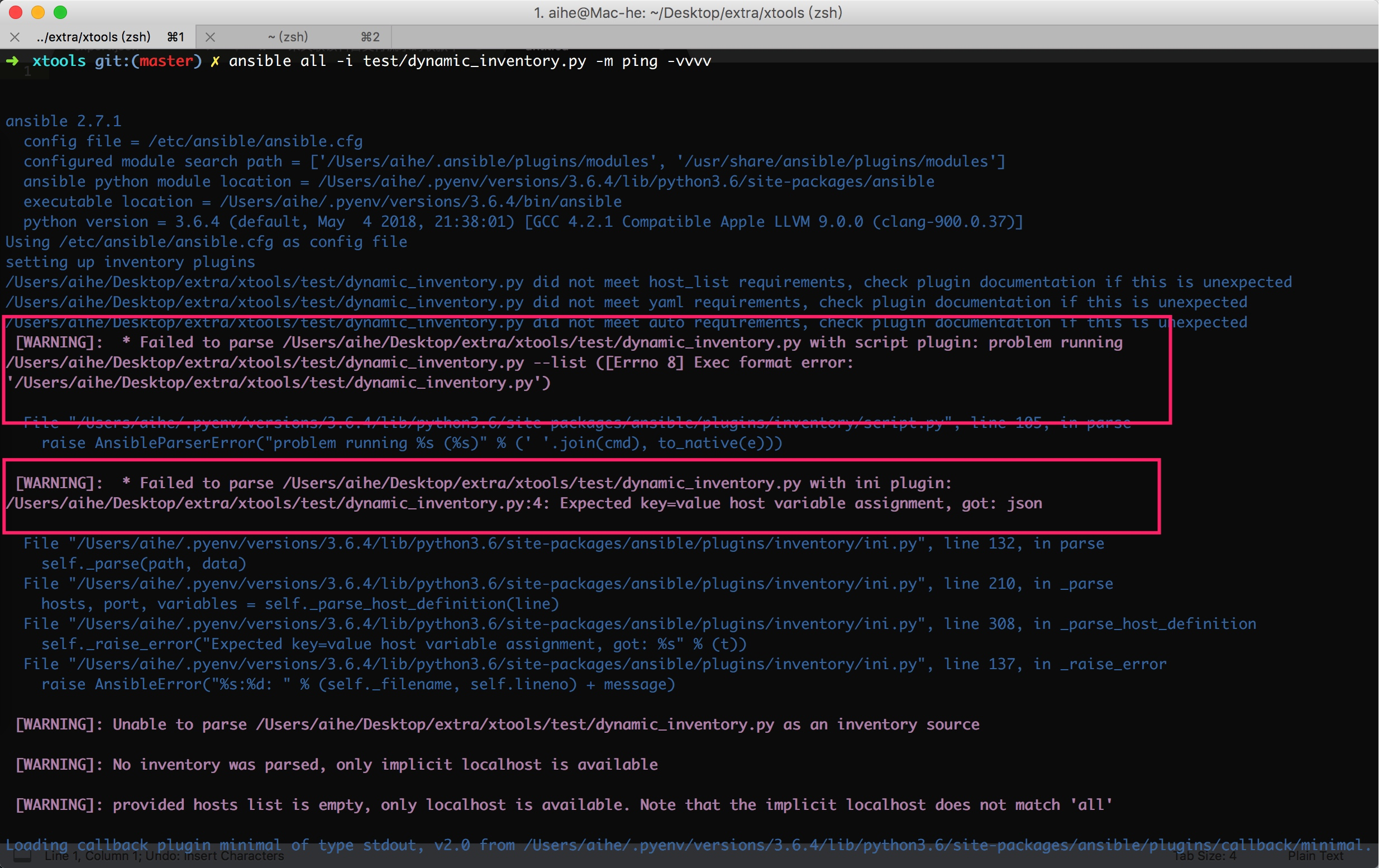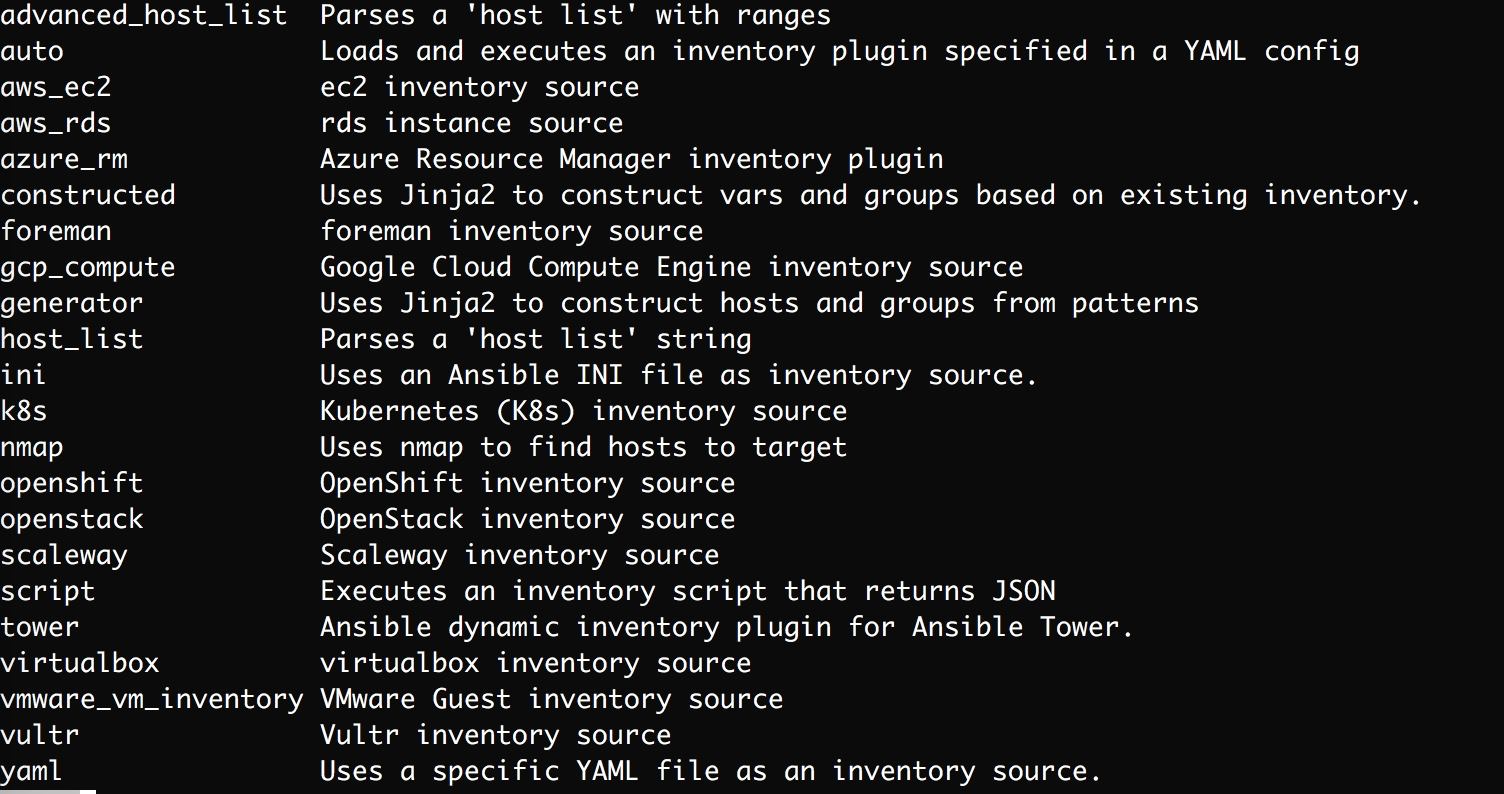Ansible Inventory指北进阶,ansibleinventory
Ansible Inventory指北进阶,ansibleinventory
Ansible的inventory文件定义了它要操作的一些主机,它可以通过inventory对这些主机进行操控。默认的inventory文件是/etc/ansible/hosts 。也可通过-i选项,来指定不同的inventory文件。
Ansible也支持从云中拉取inventory文件执行,拉取的文件可以试YMAL,ini,etc等格式。 这个是在ansbible 的 2.4版本新引入的功能,Ansible也有inventory的插件来让inventory变的更灵活和自定义化。
inventory的格式一般如下:
mail.example.com
[webservers]
foo.example.com
bar.example.com
[dbservers]
one.example.com
two.example.com
three.example.com
关于inventory的详细描述,参考我早期参与的翻译项目,Ansible 中文权威
动态inventory
静态 Inventory 指的是在文件中指定的主机和组,动态 Inventory 指通过外部脚本获取主机列表,并按照 ansible 所要求的格式返回给 ansilbe 命令的。这部分一般会结合 CMDB 资管系统、云计算平台等获取主机信息。
看到一段很不错的代码,参考下。
#!/usr/bin/python
#!/Users/aihe/.pyenv/shims/python
#coding : utf-8
import json
import sys
def group():
host1 = ['192.168.0.112']
host2 = ['192.168.0.112','192.168.0.109']
group1 = 'test1'
group2 = 'test2'
hostdata = {
group1:{"hosts":host1},
group2:{"hosts":host2}
}
print(json.dumps(hostdata,indent=4))
def host(ip):
info_dict = {
"192.168.0.112": {
"ansible_ssh_host":"192.168.0.112",
"ansible_ssh_port":22,
"ansible_ssh_user":"root",
"ansible_ssh_pass":"123457"
},
"192.168.0.109": {
"ansible_ssh_host":"192.168.0.109",
"ansible_ssh_port":22,
"ansible_ssh_user":"root",
"ansible_ssh_pass":"xxxx"
}
}
# 判断key是否在字典中,在的话打印出来,不在的话打印空字典。
if ip in info_dict:
print(json.dumps(info_dict[ip],indent=4))
else:
print(json.dumps({},indent=4))
if len(sys.argv) == 2 and (sys.argv[1] == '--list'):
group()
elif len(sys.argv) == 3 and (sys.argv[1] == '--host'):
host(sys.argv[2])
else:
print("Usage: %s --list or --host <hostname>" % sys.argv[0])
sys.exit(1)
-
单独执行的时候
 image.png
image.png
-
结合Ansible执行。虽然连接报错误了,但是这因为主机是随便定义的,如果是可以连接的主机则是正常工作的。
 image.png
image.png
到这里,其实我们的动态inventory大体框架已经出来了,剩下的则是将代码中的硬编码变为动态获取,数据库或其它持久存储的地方获取即可。
问题
在写这段代码的时候遇到几个问题,很有意思,解决问题的过程就是让我们成长的过程...
另外报的错误实在也是有点迷惑人啊。
inventory插件问题
-
错误截图,看到因为ini的插件无法解析json数据
 image.png
image.png
查看所有可用的插件列表
ansible-doc -t inventory -l
 image.png
image.png
- 更改ansible的inventory可用插件。启用Ansible插件的配置在/etc/ansible/ansible.cfg文件中,具体是那个文件在起作用,执行执行
ansible --version命令就可以看到。
 image.png
image.png
修改插件的位置在。
 image.png
image.png
执行格式问题
错误中还有关于执行格式错误的信息。
 image.png
image.png
- 错误原因
刚开始一直报执行格式错误问题,这个问题有点荒唐,因为我安装了pyenv,python执行的路径在开头写成了
#!/Users/aihe/.pyenv/shims/python
而这个文件是sh文件,普通的可执行文本文件了,导致出错,晕掉...
- 解决方案
将开头的#!修改为python的解释器。然后就执行成功了。
#!/usr/bin/python
最后
要知道inventory的格式,inventory在ansible中可以理解为主机清单。动态的inventory可以给我们提供很多便利的操作,我们可以更灵活的控制主机了。
如果你的数据格式,在已有的inventory插件中,你也可以自己尝试开发一个,具体开发参考下面的参考部分。
参考
- Ansible 进阶 | 动态 Inventory
- 开发Ansible inventory
评论暂时关闭